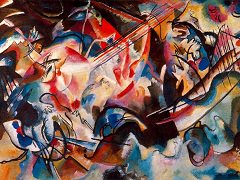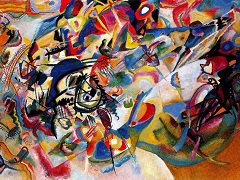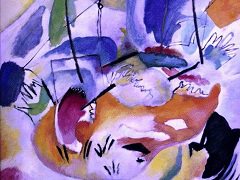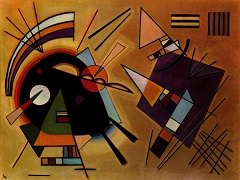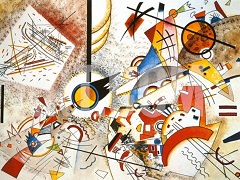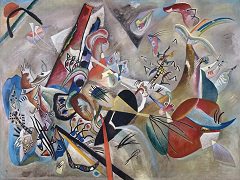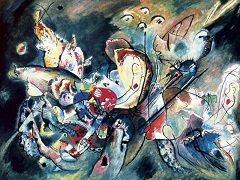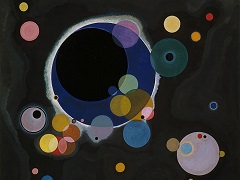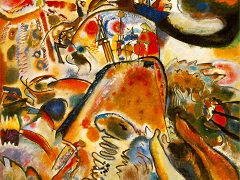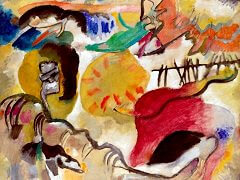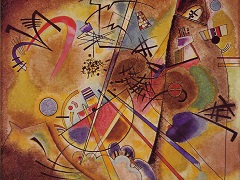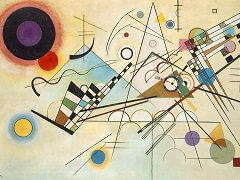The Blue Rider, 1903 by Wassily Kandinsky
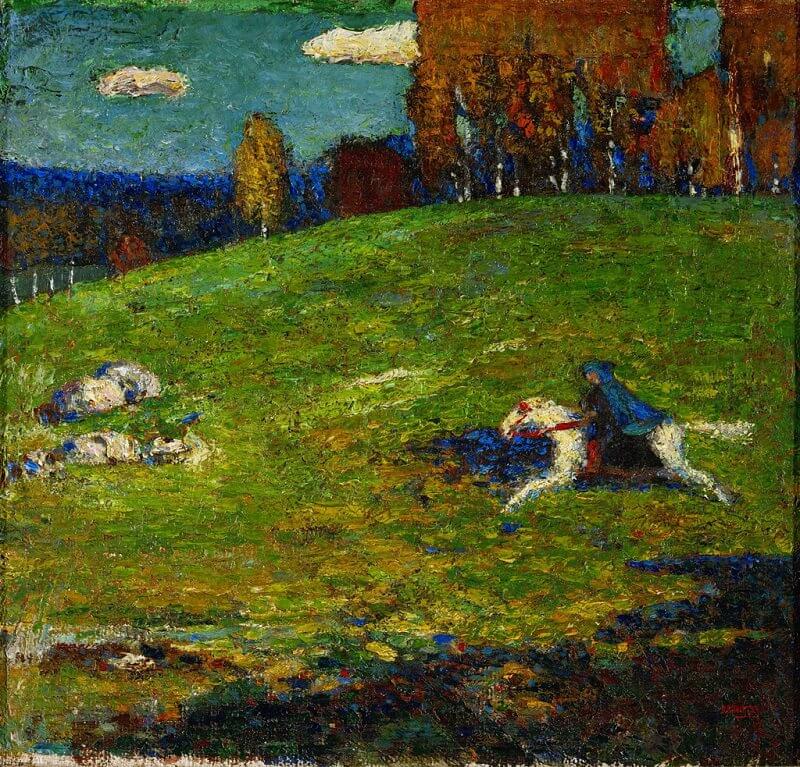
Perhaps the most important of Kandinsky's paintings from the first decade of the 1900s was The Blue Rider (1903), which shows a small cloaked figure on a speeding horse rushing through a rocky meadow. The rider's cloak is medium blue, which casts a darker-blue shadow. In the foreground are more amorphous blue shadows, the counterparts of the fall trees in the background. The blue rider in the painting is prominent (but not clearly defined), and the horse has an unnatural gait
This breakthrough work represented a decisive moment in Kandinsky's developing style. In this painting, he demonstrated a clear stylistic link to the work of the Impressionists, like Claude Monet, particularly evident in the contrasts of light and dark on the sun-dappled hillside. And the inspiration for many of Kandinsky's early works come from paintings by Vincent van Gogh with his heavy use of impasto. The theme of the horse and rider reappeared in many of his later works. For Kandinsky this motif signified his resistance against conventional aesthetic values as well as the possibilities for a purer, more spiritual life through art.

